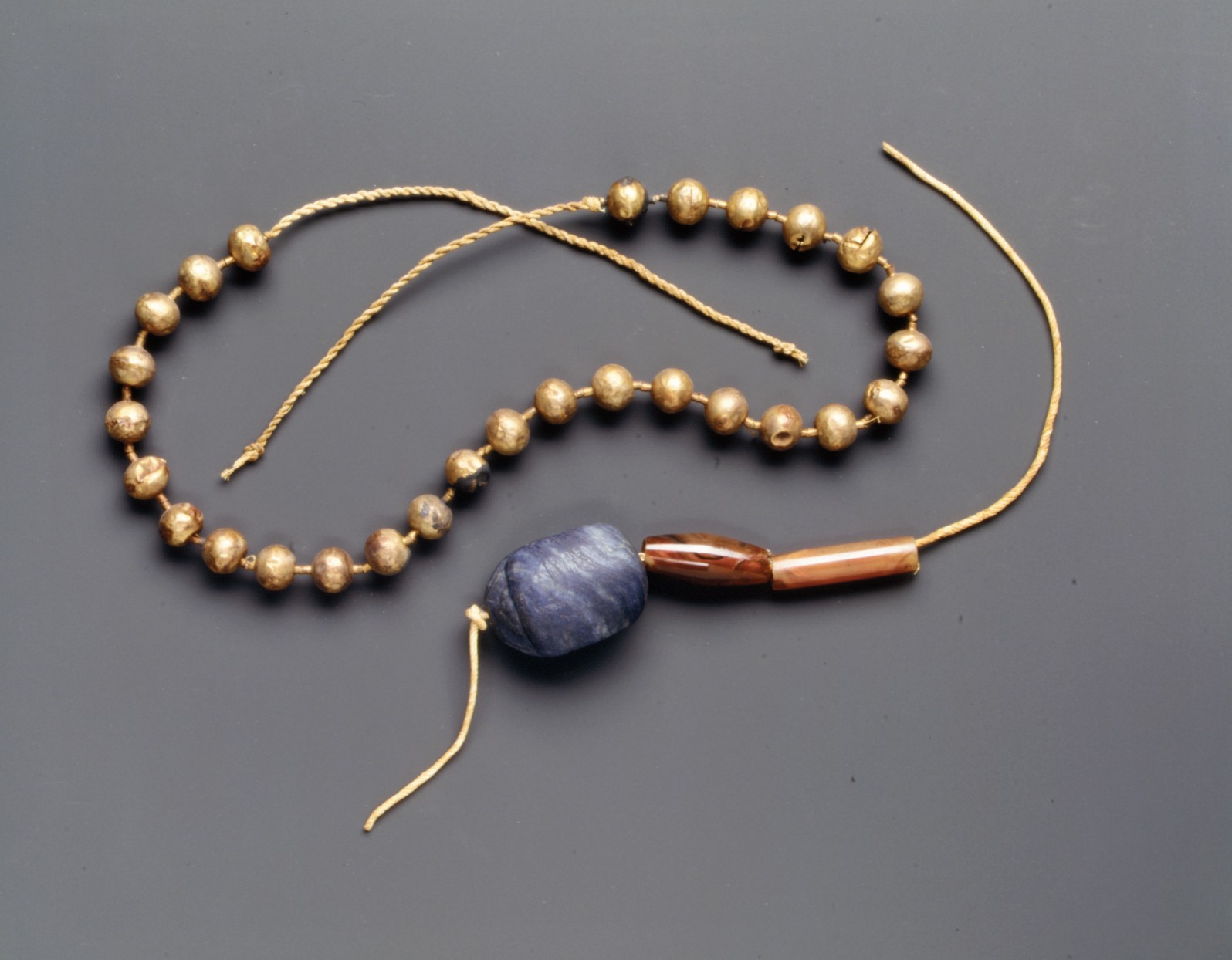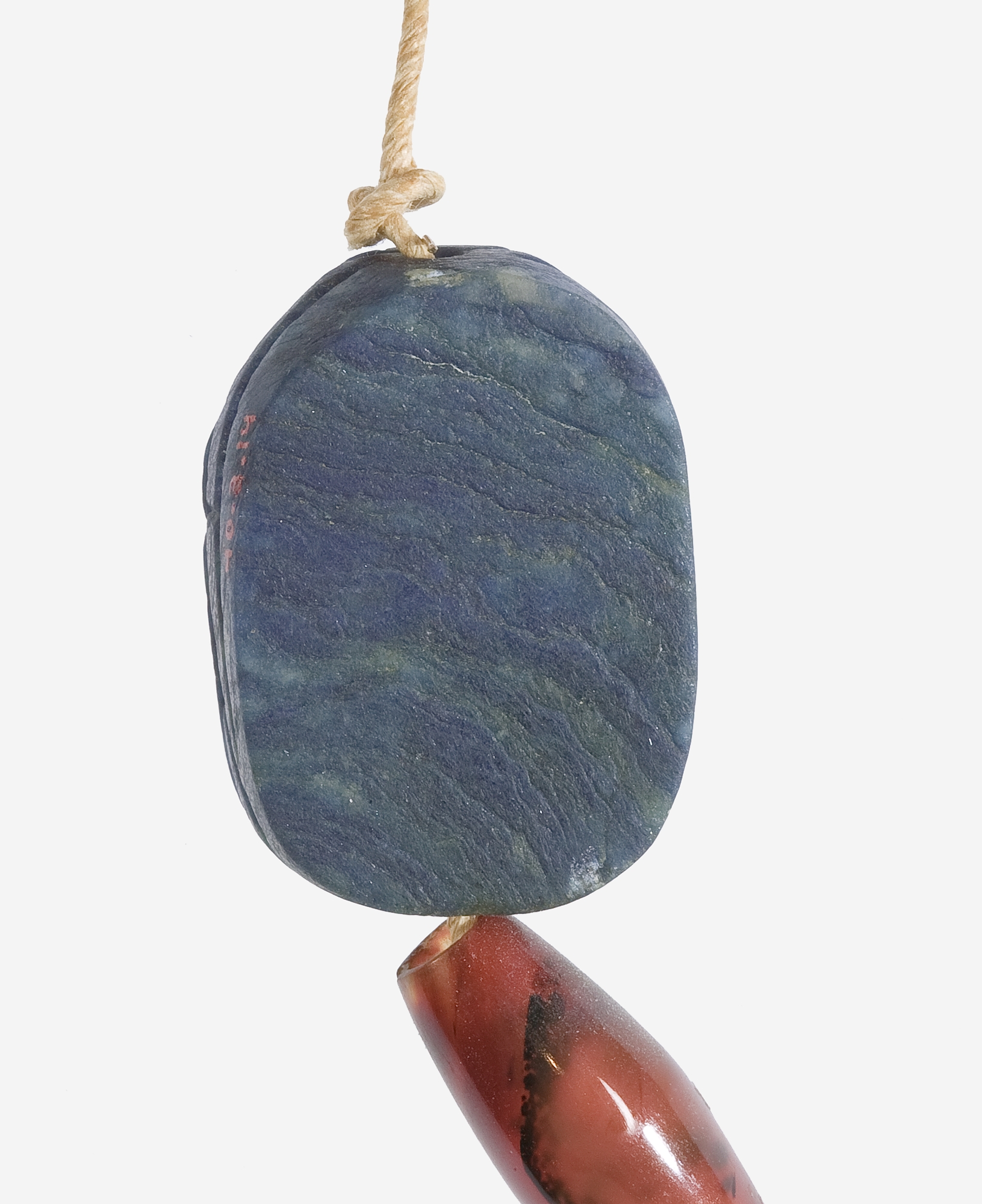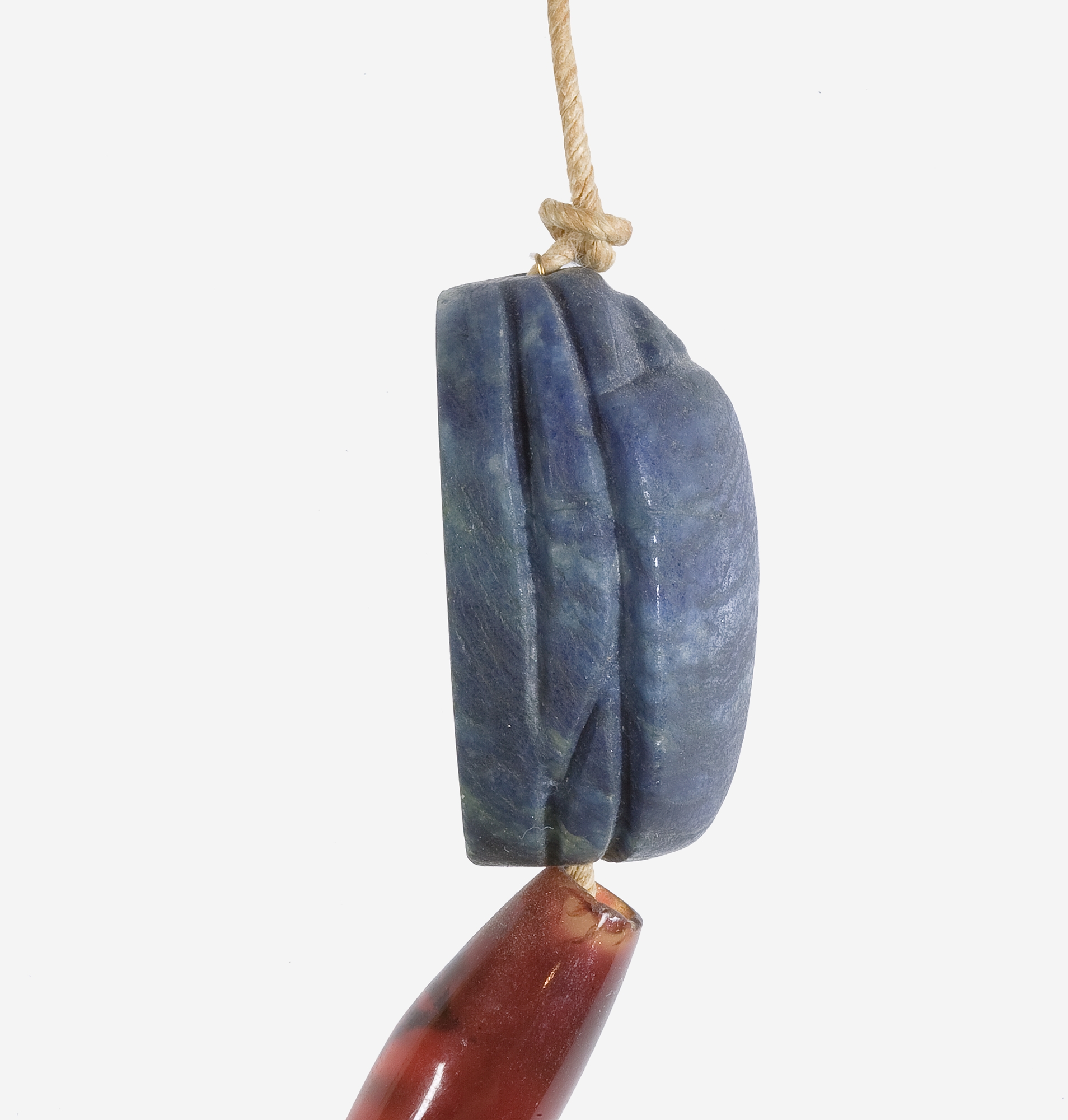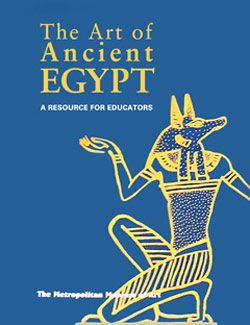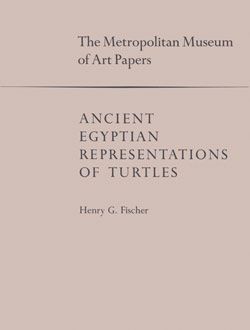Scarab and Bead Bracelet
Middle Kingdom
Not on view
Egypt was rich in natural resources and most of the stones used in jewelry making could be mined in the deserts east and west of the Nile, or on the Sinai Peninsula. One exception is lapis lazuli, which came from Afghanistan. The presence of a large lapis scarab in Wah's tomb is indication of his high status.
In Wah's time, the scarab was a relatively new invention having been developed only about a century earlier, sometime in the middle of the First Intermediate Period (about. 2100-2030 B.C.). The amulet is shaped like a dung beetle, scarabaeus sacer, which is also the source of its modern name.
The dung beetle was kheperer in ancient Egyptian. Having watched the small creatures push huge balls of dung, the ancient Egyptians imagined the sun being pushed into the sky at dawn by a beetle, and they referred to the rising sun as Kheperi. The word for "to become" or "come into being" was kheper, and the beetle hieroglyph was used to spell all of these words. As such, the scarab became a powerful amulet for rejuvenation in this life and reincarnation in the next.
This scarab has a simple oval shape with only a few deep lines on the back to indicate the head and wings, and on the sides to indicate the legs. Others, like Wah's two silver scarabs (40.3.12–.13), are more elaborate depictions of the insect.
Due to rights restrictions, this image cannot be enlarged, viewed at full screen, or downloaded.
This artwork is meant to be viewed from right to left. Scroll left to view more.


